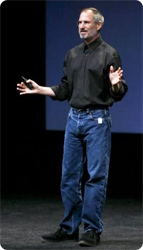I often hear or read that innovating in saturated spaces is too hard. Angels and VCs are typically quick to point out that a space is too populated to invest in and entrepreneurs should look to tread a less worn path. I’ve never particularly supported that logic, so it’s always nice to see a real-world example come along to illustrate why it’s not nearly as hard to innovate in saturated spaces as many will have you believe.
Innovation doesn’t have to be, and rarely is, a case of reinventing the wheel. Innovation can come in the form of a small shift-change in how a process or method is handled. The photo sharing app space is about as saturated as they come in the mobile world. However, almost all photo sharing apps are feed-focused and push-based. You take a photo, it gets added to some sort of user feed, and then you can share it out to your networks, friends, public, whatever.
Povio is a new photo sharing app that just launched a few weeks ago, and on the surface it’s not all that different than most other photo sharing apps, save for one exception. It’s not push-based at all. Povio users request photos from other users, and that’s how the photo sharing ‘conversation’ starts in Povio. Essentially, it’s by request or ping-focused, instead of push-focused. Povio users ping other users and let them know that they’d like to see a photo of theirs, and then they wait for that user to oblige and send it to them. It serves as an example of how a small change in behaviour can be a big differentiator in a crowded space.
Will Povio be a big hit? Hard to say. It’s not a very defensible concept and can easily be cloned or added as a feature to existing apps. It will all depend on how strong and how quickly it can attain a community of users. They were also recently selected to be part of Y Combinator’s latest cohort of startups, so that can only help.

 Oh to be Steve Jobs. Whether you love him, hate him or ignore him (pretty hard to do these days) you will be hard-pressed to find a day that compares to the one Steve Jobs will experience today in business.
Oh to be Steve Jobs. Whether you love him, hate him or ignore him (pretty hard to do these days) you will be hard-pressed to find a day that compares to the one Steve Jobs will experience today in business.